This guide can help managers and employee-owners at cooperatives, employee stock ownership plans (ESOPs), and firms seeking to improve democratic practices. Users may focus on specific topics within the guide, or they may follow it from beginning to end. It is divided into themes, with each section including activities, meeting tips, an assessment, checkpoints, and case studies.
The Innovative Finance Playbook provides an overview of the financial fundamentals of an employee stock ownership plan (ESOP) conversion. Users can access case studies of capital funders and companies that underwent transition. The playbook also lays out what criteria a company should meet to be viable for employee ownership.
This 15-hour course, which can be completed over three weeks, provides an overview of employee ownership, including its benefits for employees and businesses, utility in succession planning, and effect on the economy. Enrollees can track their understanding through quizzes and a final assessment. A shareable certificate is provided upon completion.
This free educational program is intended to help minority and female business owners understand the role transitioning to employer ownership may play in succession planning. Course modules cover employee stock ownership plans (ESOPs) and worker cooperatives. Registrants will gain a broad understanding of employee ownership, including transition financing and facilitating an ownership culture that maximizes employees’ capabilities.
A directory of key organizations and indidviduals working on employee ownership. It includes governmental and nongovernmental organizations, including at the state, national, and international level.
This detailed assessment is a tool to help employers generate a report about their social and environment impact, including impact on workers, and to benchmark against peer companies. It includes measures of job quality, including compensation, benefits, safety, and worker ownership. Practitioners who work with businesses could direct them to this tool or even walk them through it.
This interview with Mowa Haile, President of Sky Blue Builders and CEO of Apex Underground, discusses his experience and observations on the conversions of those companies to employee ownership through an Employee Stock Ownership Plan (ESOP).
Working people want more power over the terms and conditions of their work. Instead of viewing this shift as a threat or incursion, enlightened employers will find the opportunity in it. The same mechanisms that make a workplace more democratic, collaborative, and fair also can support and expand existing company priorities, from improving products and adopting new technologies to advancing diversity, equity, and inclusion efforts. While some business leaders have opted for the same tired tactics to undermine worker empowerment in favor of top-down control, a raft of innovations in worker voice, worker representation, and collaborations with labor unions offer an alternative path forward.
To help organizations apply these ideas, the Aspen Business Roundtable on Organized Labor and Charter, a media company focused on the future of work, have partnered to produce “The Shared Power Advantage: How to build a thriving company where workers have a seat at the table.” The playbook includes strategies for leaders hoping to strengthen their workplaces by empowering their employees.
In this brief, the Aspen Institute Economic Opportunities Program discusses Participatory Decision Making (PDM), including its history, the outcomes it helps create for workers and businesses, its importance in helping firms navigate technological changes and design work-based learning, and numerous examples including those from employee-owned companies.The scope of this brief is intended to help organizations working at the intersection of job quality and business competitiveness better understand how incorporating workers’ ingenuity through PDM is important for firm success and good jobs. This brief is a resource for workforce and economic development organizations, community development finance institutions, and other organizations that advise businesses or focus on or fund employer practice change, to help inform their job quality conversations and efforts with employer partners.
This profile of the North Carolina Employee Ownership Center and the Employee Ownership Expansion Network provides an overview of ongoing efforts to build infrastructure supporting the adoption of employee ownership. Focus is given to the strength of the North Carolina approach in centering racial equity, which may provide guidance for employee ownership work in other states, and on the role of state centers for employee ownership linking local actors and efforts with the national employee ownership movement. Philanthropic investors and others interested in addressing the racial wealth gap may also gain insights about how employee ownership can advance their goals.
